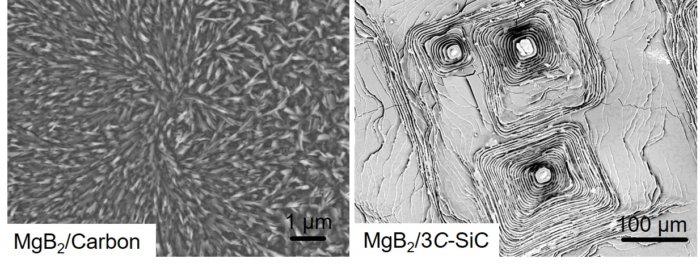Sergei Kucheyev (17-ERD-040)
Executive Summary
In this project, we are exploring a method for levitating and positioning a fuel capsule for Inertial Confinement Fusion to avoid implosion perturbations that limit output energy. This research will also provide a better understanding of properties of ultrathin superconductive films with applications in advanced materials and high-energy-density science research.
Project Description
A major current challenge of Inertial Confinement Fusion energy is implosion perturbation from fuel-capsule support. The current approach is to hold the fuel capsules inside target-capsule hohlraums by sandwiching a capsule between two thin polymeric films, referred to as tents. In addition to tents, variants of thin fibers have been used in some target designs to hold the capsule. However, both tents and thin fibers cause strong implosion perturbations. A possible solution to this problem is to hold the capsule inside the hohlraum by levitation, entirely eliminating the perturbation-causing mechanical support. We will demonstrate a path to the capsule-support problem based on quantum (superconductive) levitation. In our approach, the outer surface of the capsule is coated with a thin (<100 nm) superconductive layer of magnesium diboride. Magnetic coils outside the target-capsule hohlraum are used to levitate and position the inner fuel capsule. We intend to develop a method for depositing magnesium-diboride films on spherical capsules, and study the effects of film thickness, interfaces, and lattice defects on properties of magnesium diboride. In addition, we will build a cryogenic platform and demonstrate quantum levitation of capsules, as well as develop a levitation model.
We expect to demonstrate a viable path to an Inertial Confinement Fusion-capsule support and provide a better understanding of properties of ultrathin superconductive films in a regime dominated by defect- and interface-related effects. We will address two major scientific challenges. The first is the growth of superconductive magnesium-diboride films on curved polycrystalline or amorphous substrates. It is in an inherently non-epitaxial growth regime that remains essentially unexplored. The second scientific challenge is related to the fact that successful and stable quantum levitation relies on large critical current densities and magnetic fields (<1 T), as well as magnetic flux pinning (wherein a superconductor is "pinned" in space above a magnet). All of these properties are strongly influenced by interfaces, impurities, and lattice defects. We will address both of these challenges by developing single-step hybrid deposition methods involving formation of magnesium diboride in situ during film deposition, and by studying defect and interface engineering involving material doping during growth and controlled introduction of lattice defects by ion bombardment. We intend to determine if magnesium-diboride layers with desired properties could be fabricated to make the quantum levitation of fuel capsules a reality. We will also determine if a passive or active scheme will be required for levitation. This will define the boundaries of the engineering design of levitated fuel capsules in future National Ignition Facility experiments at Lawrence Livermore National Laboratory.
Mission Relevance
Developing novel hybrid film-deposition methods and studying defect and interface engineering involving material doping during growth and controlled introduction of lattice defects supports the Laboratory's advanced materials and manufacturing core competency. Developing a new target-capsule support method enabling future Inertial Confinement Fusion experiments that are beyond our current capabilities is relevant to the Laboratory's core competency in high-energy-density science, as well as the DOE goal of supporting a more economically competitive, environmentally responsible, secure, and resilient U.S. energy infrastructure.
FY17 Accomplishments and Results
In FY17 we (1) exploited what appeared to be the simplest method of fabricating magnesium-diboride films, which involves a sputter deposition of a pure boron coating followed by exposure to magnesium vapor at temperatures close to or above the melting point of magnesium; (2) produced several non-superconducting films; and (3) demonstrated superconductive magnesium-diboride films on flat carbon substrates.
Publications and Presentations
Kucheyev, S.O. 2017. "Quantum Levitation of Fuel Capsules". LLNL-PRES-736472.






